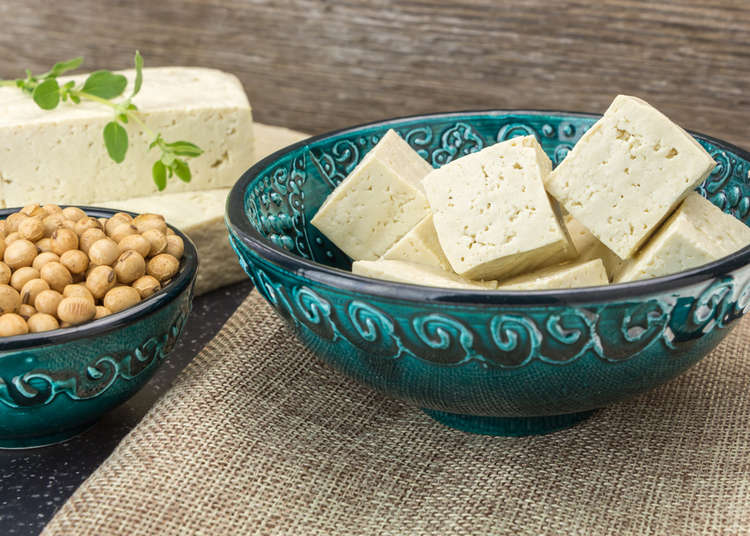
Japanese food is unlike anything you’ve ever tasted. Like Japanese culture, the flavors are often more subtle than, say, Mexican or Indian food. But within this seemingly simplistic cuisine is depth and complexity. How is this possible? The answer lies in the ingredients. Japanese cuisine uses many unfamiliar and unique ingredients. One such ingredient is tofu. Tofu can be found en masse at Japanese grocery stores and is a staple in Japanese cooking. Here’s all you need to know about this Japanese kitchen heavyweight!
- Table of Contents
What is Tofu?
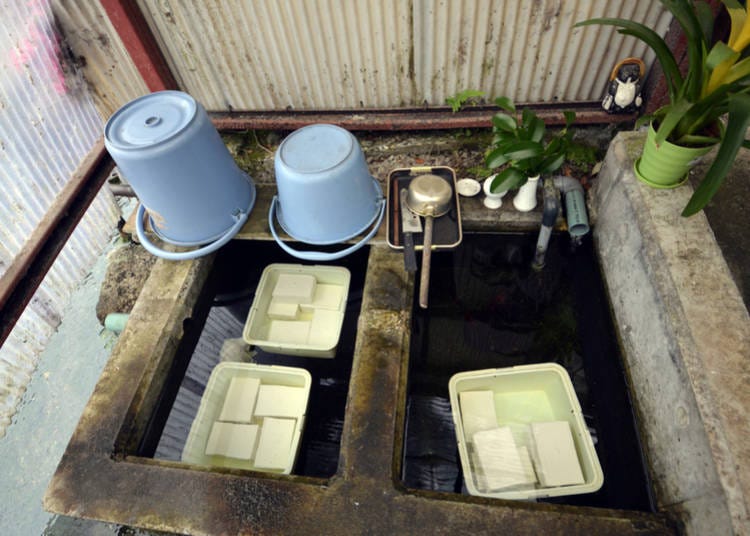
So what is tofu? Tofu is a soy product that’s been made for thousands of years. Also known as bean curd, tofu is made by coagulating soy milk and pressing the resulting curds into blocks. The ingredient is essential in Japanese cooking and used in everything from appetizers to soups to fried dishes!
Benefits of Tofu
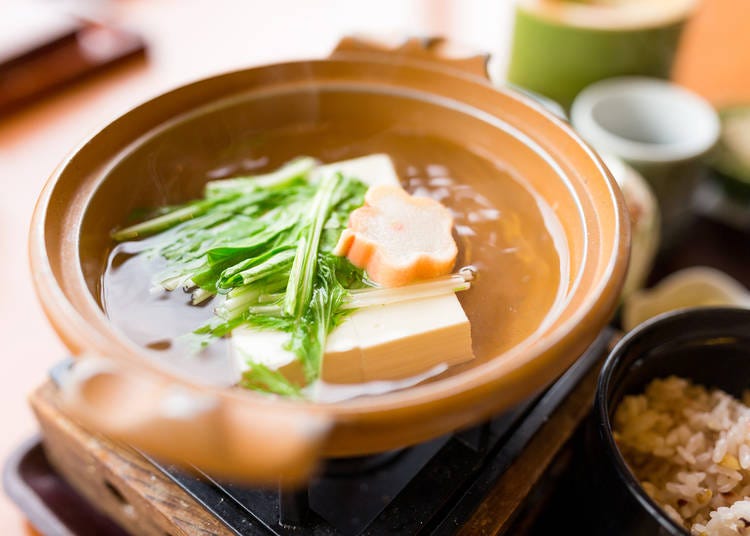
While tofu has been a staple in Japan and East Asia for quite some time, it has become increasingly popular in the West thanks to its nutritional value. Touted as a superfood, tofu is an excellent source of protein, calcium, iron, and antioxidants. Because of this, it’s a favorite among vegetarians and vegans and offers an affordable alternative to frugal meat lovers.
Types of Tofu
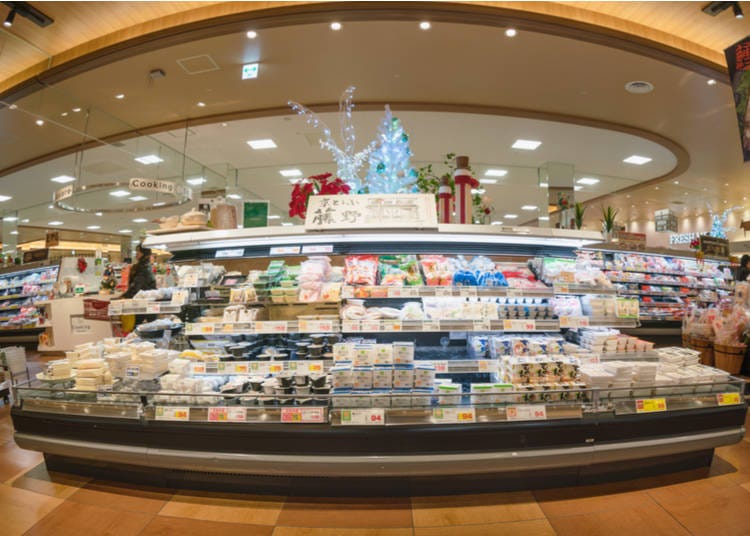
Frozen, fried, dried—even in tubes—tofu comes in all kinds of types and textures! In fact, don’t be surprised if the Japanese grocery store has more varieties of tofu than meat. To simplify things, we’re going to cover the three most common types of tofu you will find in Japanese food: silken tofu, regular tofu, and deep-fried tofu.
Silken Tofu (kinu tofu)
Silken tofu, known as kinu tofu or kinugoshi tofu in Japanese (絹ごし豆腐), is the first type of tofu you need to know. This tofu, which gets its name from its smooth and soft texture, can be considered the ‘standard’ Japanese tofu. Unlike other tofu varieties, silken tofu is not pressed to extract the whey. Instead, the soy milk solidifies into a soft, custard-like block. Some refer to silken tofu as fresh tofu.
Regular Tofu (momen-dofu)
The next tofu variety to discuss is regular tofu. Called momen-dofu in Japanese (木綿豆腐), this tofu type has undergone the straining process to remove the excess water and whey. This step uses a cotton cloth to strain the liquid out, hence the name momen, which means cotton in Japanese. The texture of regular tofu is firmer and considered easier to cook. Regular tofu is also referred to as coarse tofu, cotton tofu, or spongy tofu.
Deep-Fried Tofu (agedashi-dofu)
The last tofu variety that is common in Japanese cuisine is deep-fried tofu. Agedashi-dofu (揚げ出し豆腐), as it’s called in Japanese, is—you guessed it—fried tofu. While you can buy deep-fried tofu premade in the tofu aisle of a Japanese grocery store, agedashi-dofu is best made fresh at home. Similarly, there is aburaage (thin deep-fried tofu) and atsuage (thick deep-fried tofu) that are more commonly found in Japanese grocery stores.
Taste of Tofu
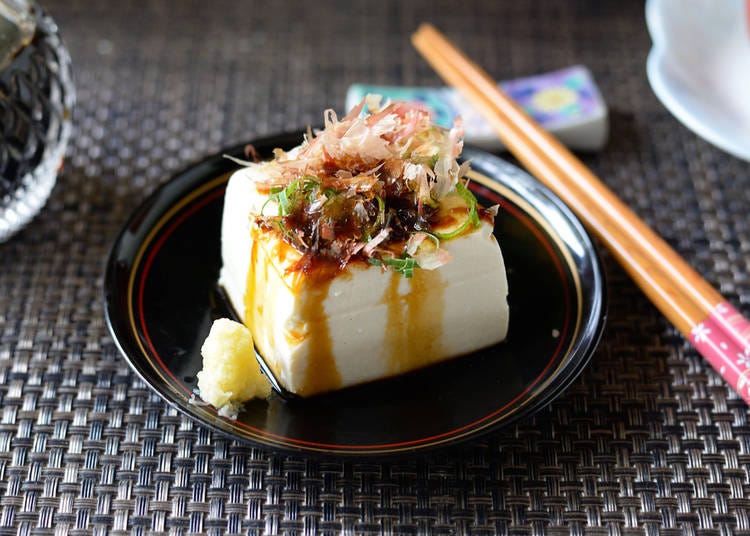
All of this information is great, but what’s important is taste. So, what does tofu taste like? Those unfamiliar with tofu might say it’s bland but, in fact, good tofu has a light soy bean-like flavor. The flavor is subtle, so it complements a wide range of dishes and cuisines. The key to getting the most flavor out of tofu is understanding its ability to absorb flavors. Tofu is amazing at absorbing the flavors of marinades and paired with sauces.
Cooking with Tofu
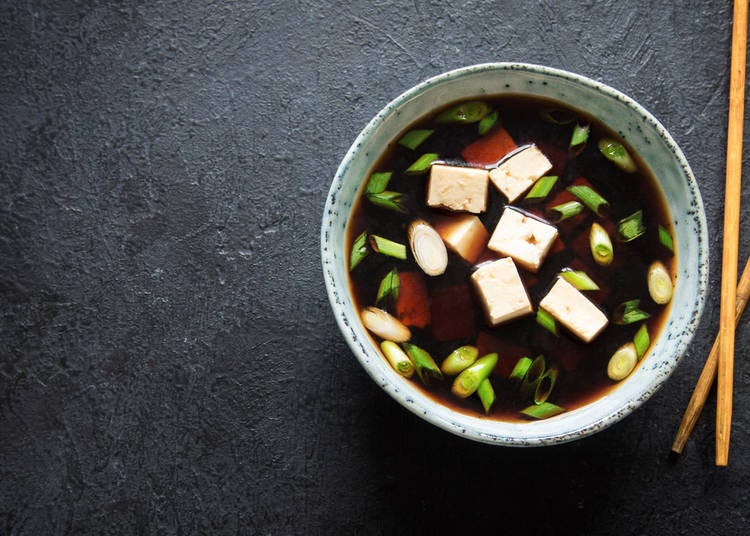
So, now that you know how tofu tastes, it’s time to get cooking! Whether you’re someone who is vegetarian, vegan, balling on a budget, or just health-conscious, tofu is a great protein-packed option in the kitchen. The most important thing to remember while cooking with tofu is choosing the right texture for the dish! Silken tofu will fall apart and become unappetizing in some dishes, while deep-fried tofu might be too strong for others. Here are some popular dishes you’ll find in Tokyo that use this special ingredient.
Tip: if you are still getting used to tofu’s soft texture or want something with a heartier bite, put the tofu in the freezer to get a more ‘meaty’ texture.
Miso Soup
One of the most well-known dishes that use tofu, miso soup is a great example of how texture plays an important role in the dish. Miso soup is made with all kinds of tofu, and each one is different from the last. With regular tofu, you’ll find each piece firm and smooth and packed with delicious miso flavor. On the other hand, deep-fried tofu won’t absorb as much of the miso broth, but will add a nice texture to the soup.
Nabe
See how flavorful tofu can be in a good nabe. Nabe refers to a variety of Japanese hot pot dishes. A popular dish in the colder months, tofu, meat, and vegetables are boiled on a table in front of you and served hot. There are endless amounts of broths you can choose from, and all of them are delicious. Go for sukiyaki to enjoy the salty soy sauce and mirin with gooey raw egg, or try a kimchi-based broth for some more heat. And, each time, enjoy how the tofu absorbs the broth for a flavor-packed bite!
Tofu Burger *vegetarian*
Quite new on the Tokyo food scene, but still worth mentioning, is the tofu burger. These vegetarian burgers show exactly what tofu can do in both taste and texture! Done right, these burgers are packed with spice and have a satisfying consistency with each bite.
It’s cheap, it’s healthy, and it’s tasty—tofu is a staple in Japanese cooking. Whether you want to eat healthy or just save money during your trip to Tokyo, try some tofu dishes for something authentic and and totally Japanese.
*Prices and options mentioned are subject to change.
*Unless stated otherwise, all prices include tax.
Popular Tours & Activitiess
Recommended places for you
-

Farm Tomita
Other Nature
Furano / Biei / Sounkyo
-

Former Hokkaido Government Office Building (Red Brick Office)
Other Historic Sites
Sapporo / Chitose
-
Appealing

Asahiyama Zoo
Zoos, Aquariums & Botanical Gardens
Asahikawa
-
Appealing

Sapporo Ramen Yokocho
Ramen
Sapporo / Chitose
-

LakeAkan
Rivers, Lakes & Canyons
Abashiri
-
Appealing

Rukku and Uohei
Izakaya
Sapporo / Chitose
-

Get Ready to Catch 'Em All! First Ever Permanent Outdoor Pokémon Park Opening Near Tokyo!
-

2025 Japan Autumn Color Report: Tokyo's Ginkgo Trees Starting to Glow
by: Timothy Sullivan
-

2025 Autumn Colors Report: Kurobe Gorge Nearing Peak
by: Timothy Sullivan
-

Don't Miss Out! The One Thing You Must Do Before Shopping at Mitsui Shopping Park LaLaport: Get Your Max 10% OFF Coupon Book
-

Enjoy Japan's Gorgeous Winter Lights! Ride the Romancecar to Shonan no Hoseki Illumination
by: Guest Contributor
-

LaLaport TOKYO-BAY North Building Now Open: Shop, Dine & Enjoy Events at LaLa arena, Just 2 Stops from Disney
by: Wemmy Chau
-

Slurping at the Legendary Sumire Ramen: Where to Enjoy a Bowl of Traditional Sapporo Ramen
-

(Video) Walking Tour along Narita Omotesando - Quaint Historical Village near Narita Airport!
by: Victor Gonzalez
-

Skiing in Japan With Kids: Top 7 Tips for Enjoying a Family Ski Holiday
-

4 Day-Trip Snow Activities to Enjoy in Sapporo: Snowmobiling, Horseback Riding & More
-

Manhole Mania: Exploring Japan’s Trendy Manhole Cover Art!
-

Day Trip from Sapporo to Otaru: Access, Itinerary & Food Guide
by: Guest Contributor
- #best sushi hokkaido
- #things to do hokkaido
- #best ramen sapporo
- #what to bring to japan
- #new years in tokyo
- #what to buy in ameyoko
- #japanese nail trends
- #what to do in odaiba
- #onsen tattoo friendly tokyo
- #daiso
- #best sweets otaru
- #japanese fashion culture
- #best nature furano
- #japanese convenience store snacks
- #best japanese soft drinks
















